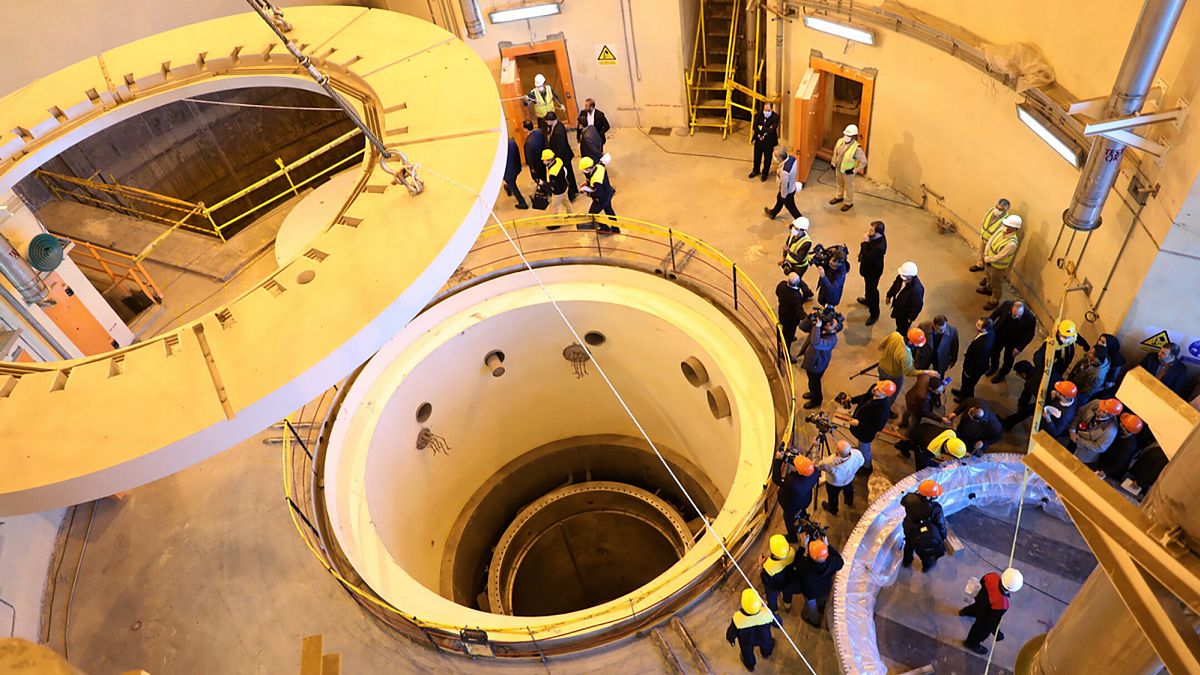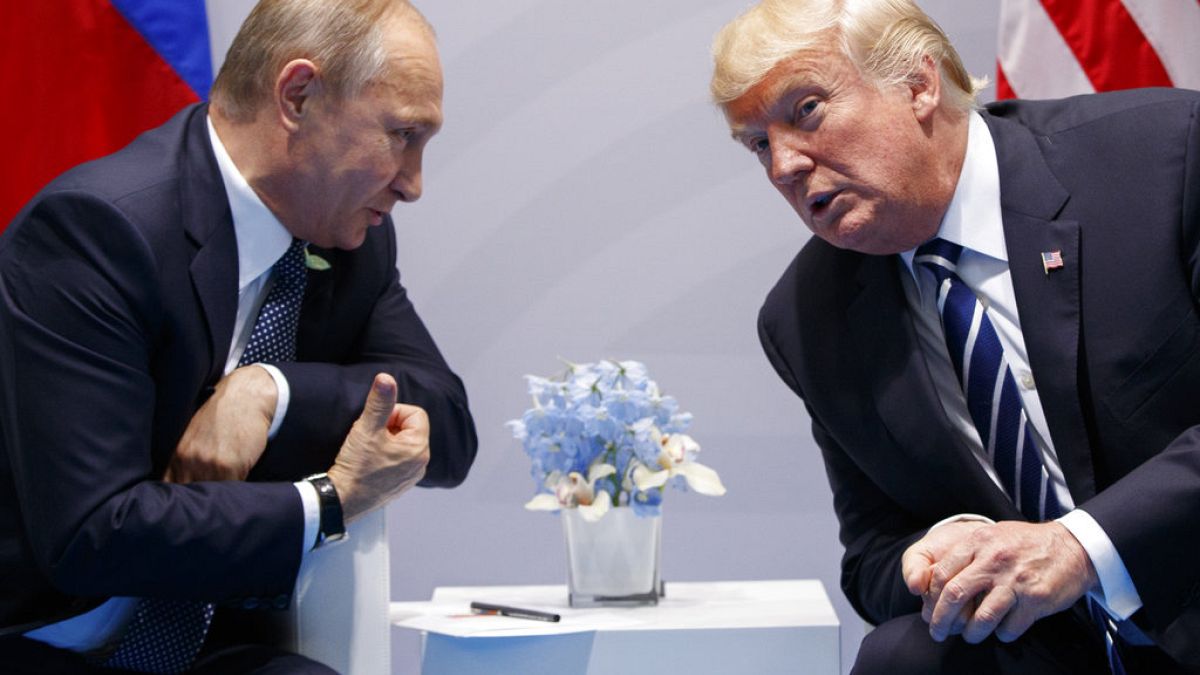Portugal and Canada are both considering alternatives to the now controversial American-made F-35 class of fighter jet, according to recent media reports.
Micael Johansson, the CEO of Swedish company Saab, confirmed to Swedish media that Portugal and Canada are studying whether to buy the JAS 39 Gripen E/F fighter jet.
The news comes weeks after Nuno Melo, Portugal’s defense minister, said he was skeptical over buying the US F-35A Lightening II, which is produced by American aerospace and defence company Lockheed Martin.
It’s a sentiment echoed by goverment counterparts in Canada, who tell Euronews Next they’ve launched a review into the fighter jet’s procurement but have not cancelled the contract.
Part of the concern around the F-35 is the fear that a “kill switch” that could ground the planes is embedded onboard, despite no concrete evidence of this and refutals by Lockheed Martin.
So is the Swedish-built aircraft a viable replacement for the F-35? If not, is there another European alternative that could be?
'They’re designed for different things'
Firstly, experts say that the Gripen E/F and the F-35A Lightening II aren’t interchangeable because they’re "designed for different things".
Walter Kowalski, a former project manager at NATO, said the main advantage for Saab’s Gripen fighters is that they can host a variety of different weapons, including both long and short-range missiles, and guided bombs.
This interoperability lets nations that buy the Gripen customise it with the parts and weapons that it already has, Kowalski said.
"The F-35 is like a Ferarri and the Gripen is like a Honda Civic," Kowalski explained, adding that finding replacement parts for one of the 150,000 parts on the Gripen is easier than for the F-35.
"You can’t fix a Ferrari on the side of the road… but you could probably fix a Honda Civic".
For example, Saab says on its website that Brazil’s Gripen contract also came with a transfer of knowledge to Brazilian companies that will help the country "develop, produce and maintain" the fighter jets for up to 40 years without the need for Swedish teams to do updates.
Andrew Erskine, a research fellow at the Institute for Peace & Diplomacy (IPD), said the F-35A Lightening II is instead modeled after what the Americans believe is "the perfect fighter jet according to the Americans".
The Gripen outperforms the F-35A Lightening II in its maximum speed, getting up to 2,400 km/h compared to the F-35’s 1,900 km/h. The Gripen can also fly further on missions and have greater fuel capacity.
The Gripen is also less expensive than the F-35, Kowalski added, coming in at an estimated operating cost of between $4,700 (€4,135) and $7,000 (€6,159) an hour compared to the F35’s $33,000 (€26,391) to $40,000 (€35,188) an hour.
Mission turnaround time is also quite different between the crafts, Erskine explained, with the Gripen being ready for a new mission in 20 minutes compared to the 3 hours needed for the F-35.
But when the Gripen is ready to go, it has a smaller payload, meaning it can carry fewer heavy weapons than the F-35.
What the F-35 is a "system of systems" that make it stealthy and virtually indetectable for radar systems, Erskine added.
"The F-35 has complex softwares that need lots of sensors, lots of radar jamming, and lots of electronic warfare capabilities," he said.
So if a country is looking for a stealth aircraft, then the Gripen "is not the gold standard" for that kind of mission, Kowalski added.
How American is each fighter jet?
Another important consideration for countries, both Erskine and Kowalski agree, is how "American" their fighter jet is.
The American International Traffic in Arms Regulations (ITAR) makes it so the US has ultimate control about what made-in-US technologies can be exported to other buyer countries in the name of protecting national security, like most of the components of the F-35, for instance.
Erskine said it also means that European nations looking for F-35 parts have to deal directly with whichever US administration is in power with “no other avenue” to get the parts.
So buying the F-35A Lightening II means a country is investing in "a high-cost [aircraft with] very complex logistics and you’re extremely dependent on being friends with the particular administration of the United States at that time," Kowalski added.
The Gripen also has an estimated 30 per cent of its crafts made of US parts where the patents for the technology would be under American control, Erskine said.
One of the most striking examples of this is that the Gripen either uses a F404 or F414 engine, manufactured by Volvo but with a design by US manufacturer General Electric that the Swedes upgraded in 2023.
The aircraft’s life support system, which helps its pilots survive in the case of an emergency, like a backup oxygen supply, is made by Honeywell, a North Carolina-based aerospace company.
If the main concern is avoiding any influence by the US administration, Kowalski said France’s Dassault Rafale F4 is the closest fighter jet on the market that has very little involvement from the US government.
The Rafale F4 is considered "extremely balanced" because it has a easy transition from land to carrier-based operations, easy to service, and good stealth that means it is useful for many types of missions, he added.
But, Kowalski said Dassault - and by extension, the French government - face many obstacles if they want to market their aircraft as one that has had no influence from the Americans.
"When you’re selling to countries like Egypt, Qatar, India, UAE etc, they’re used to American components… and American systems," he said. "That’s what they want… and the customer is always right in that regard".
'We’re looking at 25 years from now'
Kowalski cautions European countries that are rethinking having the F-35 in their fleets to think of the "next 25 years" of their national security.
"To raise your hands and sort of throw shade to the current adminsitration and be like… we’re going to stop our investment into our national security, that would not be wise to me," he said.
Instead, he advises that EU countries "strike a deal" in Washington DC to find a "proportional and equitable solution" that is good both economically and strategically.
To Erskine, the question is this: "Is Trumpism done when Trump is done?"
"I mean, if you look at his vice president, JD Vance, it seems like he would be very much willing to incorporate certain Trumpian elements [if he becomes president], whether it's the protectionist or transactional diplomacy of President Trump," he said.
Erskine said Europe should put together a coalition that shares technology, critical fighter jet parts, and supply chains to end that reliance on American technologies.
"What we need to see is more strategic foresight," he said.

 2 days ago
6
2 days ago
6






 We deliver critical software at unparalleled value and speed to help your business thrive
We deliver critical software at unparalleled value and speed to help your business thrive






 English (US) ·
English (US) ·